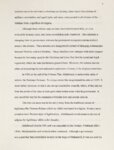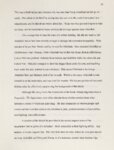| Description |
The first section presents an historical background to the reign of Abdulhamid II, Sultan of the Ottoman Empire (1876-1909). This provides a context for a description of who the Istanbul kabadayts were. The kabadayts formed a subculture within the larger Ottoman society. They were closely related to other groups such as kulhanbeys, kopuks, and tulumbacts, all of whom are examined here. There were two distinct views of the kabadayis. One was that they were "street chevaliers," protectors of the weak and defenders of the helpless. The other was that they were thugs who assaulted people at will and lived by extortion. Both of these views have some validity, and the relationship between the ideal and the reality of the kabadayzs is examined in detail. In the next section the organization of kabadayis into gangs during the reign of Abdulhamid II and the nature of those gangs and their leaders are examined. The following section looks at the origins of the kabadayi world, finding it in the Janissary milieu. The Janissaries, a section of the Ottoman army, had been destroyed in 1826, but many aspects of their social world lived on in the kabadayts. Finally, the decline of the kabadayis and their survival into the modem world is examined. |


































































